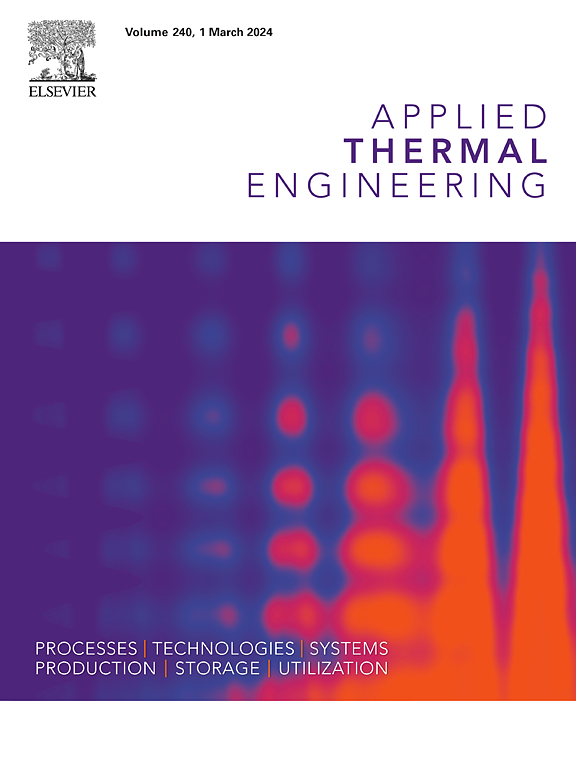Box-Behnken design and artificial neural network guided insights on viscosity reduction and maximum swollen volume of heat-treated sugarcane bagasse based kraft black liquor
IF 6.9
2区 工程技术
Q2 ENERGY & FUELS
引用次数: 0
Abstract
Heat treatment is an efficient technology for reducing the viscosity and improving the combustion behaviour of non-wood black liquors for chemical recovery in pulp mills. However, the interactive effects of process parameters and predictive modelling of this technology are little reported in the literature. This research presents Box-Behnken Design (BBD) and Artificial Neural Network (ANN) guided insights on a heat treatment process used for addressing the high viscosity and lower swelling problems associated with kraft black liquor of sugarcane bagasse. Here, the heat treatment of sugarcane bagasse based semi-concentrated kraft black liquor (SBSCKBL) was performed considering the temperature (175–185 °C), time (10–20 min), and residual active alkali (RAA) as Na2O (4.5–6.5 %) as the process inputs while the viscosity reduction and maximum swollen volume (MSV) as the outputs. The viscosity reduction and MSV quadratic models revealed R2 of 1.0 and 0.9869, respectively, with pvalue < 0.05, signal: noise >4.0 and non-significant lack of fits. A significant interaction between temperature–time, temperature-RAA, and RAA-time was noted towards viscosity reduction and MSV. A viscosity reduction of 75.24–76.96 % and MSV of 10.3-11.0 ml/g have been obtained at the optimum process conditions with an overall desirability of 0.66. ANN models developed for viscosity reduction and MSV using a back-propagation algorithm gave the overall R-values of 0.999 and 0.832, respectively. The original and optimally heat-treated SBSCKBL was studied for physicochemical characteristics, SEM, FTIR, XRD, TGA and DSC. This study might be beneficial for designing black liquor heat treatment plants in pulp mills operating on agro-residues.

Box-Behnken设计和人工神经网络指导了热处理甘蔗渣基硫酸盐黑液的降粘度和最大膨胀体积的研究
热处理是降低纸浆厂化学回收用非木质黑液粘度和改善燃烧性能的有效技术。然而,该技术的工艺参数和预测建模的相互作用效应在文献中很少报道。本研究提出了Box-Behnken设计(BBD)和人工神经网络(ANN)指导下的热处理工艺,用于解决与甘蔗渣卡夫黑液相关的高粘度和低膨胀问题。以温度(175 ~ 185℃)、时间(10 ~ 20 min)和残余活性碱(RAA)为Na2O(4.5 ~ 6.5%)为工艺输入,以降粘度和最大膨胀体积(MSV)为输出,对蔗渣基半浓缩牛皮黑液(SBSCKBL)进行热处理。黏度降低和MSV二次模型的R2分别为1.0和0.9869,p值为<;0.05,信号:噪声>;4.0,无显著拟合缺失。温度-时间、温度- raa和raa -时间对粘度降低和MSV有显著的相互作用。在最佳工艺条件下,粘度降低75.24 - 76.96%,MSV为10.3-11.0 ml/g,总体理想度为0.66。使用反向传播算法开发的用于粘度降低和MSV的ANN模型的总体r值分别为0.999和0.832。对原始材料和经优化热处理后的SBSCKBL进行了理化性质、SEM、FTIR、XRD、TGA和DSC分析。本研究可为以农业废弃物为原料的纸浆厂黑液热处理装置的设计提供参考。
本文章由计算机程序翻译,如有差异,请以英文原文为准。
求助全文
约1分钟内获得全文
求助全文
来源期刊

Applied Thermal Engineering
工程技术-工程:机械
CiteScore
11.30
自引率
15.60%
发文量
1474
审稿时长
57 days
期刊介绍:
Applied Thermal Engineering disseminates novel research related to the design, development and demonstration of components, devices, equipment, technologies and systems involving thermal processes for the production, storage, utilization and conservation of energy, with a focus on engineering application.
The journal publishes high-quality and high-impact Original Research Articles, Review Articles, Short Communications and Letters to the Editor on cutting-edge innovations in research, and recent advances or issues of interest to the thermal engineering community.
 求助内容:
求助内容: 应助结果提醒方式:
应助结果提醒方式:


